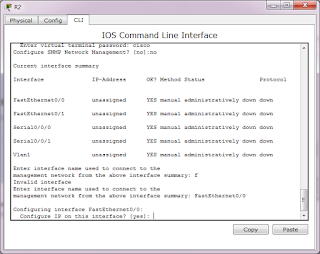Cacti Readme File
REQUIREMENTS:
Cacti should be able to run on any Unix-based operating system with
the following requirements:
PHP 5.1+
MySQL 5.0+
RRDTool 1.0.49+, 1.4+ recommended
NET-SNMP 5.2+
Web Server that supports PHP
PHP Must also be compiled as a standalone cgi or cli binary. This is required
for data gathering in crontab.
A Note About RRDtool:
RRDTool is available in multiple versions and a majority of them are supported
by Cacti. Please remember to confirm your Cacti settings for the RRDtool
version if you having problem rendering graphs.
Also important to note in version Cacti 0.8.6h and above, graph items with
no color assigned are now properly presented to RRDTool. The upgraded
will fix graph items that will cause your graphs not to render, but as
always, please remember to backup before you proceed to upgrade.
ABOUT CACTI:
Cacti is a complete frontend to RRDTool, it stores all of the necessary
information to create graphs and populate them with data in a MySQL database.
The frontend is completely PHP driven. Along with being able to maintain
Graphs, Data Sources, and Round Robin Archives in a database, cacti handles
the data gathering. There is also SNMP support for those used to creating
traffic graphs with MRTG.
Data Sources
To handle data gathering, you can feed cacti the paths to any external
script/command along with any data that the user will need to "fill in",
cacti will then gather this data in a cron-job and populate a MySQL
database/the round robin archives.
Data Sources can also be created, which correspond to actual data on the
graph. For instance, if a user would want to graph the ping times to a host,
you could create a data source utilizing a script that pings a host and returns
it's value in milliseconds. After defining options for RRDTool such as how to
store the data you will be able to define any additional information that the
data input source requires, such as a host to ping in this case. Once a data
source is created, it is automatically maintained at 5 minute intervals.
Graphs
Once one or more data sources are defined, an RRDTool graph can be created
using the data. Cacti allows you to create almost any imaginable RRDTool graph
using all of the standard RRDTool graph types and consolidation functions.
A color selection area and automatic text padding function also aid in the
creation of graphs to make the process easier.
Not only can you create RRDTool based graphs in cacti, but there are many
ways to display them. Along with a standard "list view" and a "preview mode",
which resembles the RRDTool frontend 14all, there is a "tree view", which
allows you to put graphs onto a hierarchical tree for organizational purposes.
User Management
Due to the many functions of cacti, a user based management tool is built in
so you can add users and give them rights to certain areas of cacti. This would
allow someone to create some users that can change graph parameters, while
others can only view graphs. Each user also maintains their own settings when
it comes to viewing graphs.
Templating
Lastly, cacti is able to scale to a large number of data sources and graphs
through the use of templates. This allows the creation of a single graph or
data source template which defines any graph or data source associated with it.
Host templates enable you to define the capabilities of a host so cacti can
poll it for information upon the addition of a new host.












